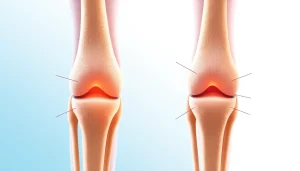A Comprehensive Guide to Healing Trauma: Techniques and Insights for Recovery

Understanding Trauma and Its Effects
What is Trauma?
Trauma can be described as an emotional response to a distressing event such as an accident, rape, violence, or the sudden death of a loved one. This response can result from experiencing or witnessing an event that overwhelms an individual’s capacity to cope. Trauma is not solely a result of exposure to a threat but also tied to the individual’s perception of the event. For example, what might be a traumatic experience for one person could be processed differently by another. This highlights the complexity of trauma and its highly personal nature.
Signs and Symptoms of Trauma
Recognizing the signs and symptoms of trauma is crucial for both sufferers and support networks to facilitate healing. Common signs include:
- Flashbacks or intrusive memories of the event
- Emotional numbness or detachment from others
- Heightened anxiety or hyperarousal, which may manifest as insomnia or irritability
- Avoidance of places, people, or activities that remind one of the trauma
- Physical symptoms such as headaches or stomach aches without clear medical reasons
These symptoms can vary significantly over time. Some individuals notice a direct response following the traumatic event, while others might experience delayed reactions, sometimes manifesting years later.
Different Types of Trauma and Their Impact
Trauma can be categorized into several types, including:
- Acute Trauma: Results from a single overwhelming event.
- Chronic Trauma: Results from repeated and prolonged exposure to traumatic events, like domestic violence or abuse.
- Complex Trauma: Involves multiple and varied traumatic events, often occurring in childhood, such as abuse and neglect.
- Developmental Trauma: Occurs in early childhood often and can significantly impact emotional and psychological development.
Understanding the type of trauma can inform the pathway to healing, as different types may necessitate different approaches and recovery timelines.
Healing Trauma: Steps to Recovery
Effective Healing Trauma Techniques
Healing trauma is a multi-faceted process that often combines several techniques. Here are some effective approaches:
- Talk Therapy: Engaging in therapeutic conversations allows individuals to process their experiences and feelings in a safe environment. Therapies such as Cognitive Behavioral Therapy (CBT) and Eye Movement Desensitization and Reprocessing (EMDR) are proven methods in trauma recovery.
- Somatic Therapies: Techniques like Somatic Experiencing focus on bodily sensations to unlock trauma held in the body, fostering a connection between mind and body for effective release.
- Creative Therapies: Art, music, and drama therapy can provide alternative means of expression, enabling individuals to articulate their trauma in non-verbal ways.
- Movement Therapies: Types such as yoga and dance can help release pent-up physical energy associated with trauma, allowing for a reconnection with one’s body.
The key lies in finding the method that resonates with the individual’s experiences and personal preferences, facilitating a tailored healing path.
Role of Professional Help in Healing
It’s essential to acknowledge the value of professional help in the trauma healing process. Psychologists, therapists, and support groups provide a structured way to process trauma and its implications. They offer not just therapeutic techniques but also a support network that can reassure individuals they are not alone in their journey. For many, engaging in a therapy setting is crucial for addressing feelings too overwhelming to tackle alone. Healing trauma often involves varied techniques, and professionals are equipped to guide individuals toward the most suitable solution.
Self-Care Practices for Trauma Recovery
In addition to professional help, self-care practices contribute critically to trauma recovery. Strategies that individuals may consider incorporating into their routines include:
- Mindfulness and Meditation: Regular practice can cultivate a sense of calm and awareness, helping mitigate overwhelming emotions.
- Physical Exercise: Movement generates a release of endorphins, beneficial for mood enhancement and stress relief.
- Healthy Sleep Hygiene: Ensuring quality rest can help the brain process and heal from trauma more effectively.
- Nourishing Diet: Eating a balanced diet can promote optimal mental health and physical well-being.
Implementing these strategies is vital for self-empowerment and can complement professional treatments effectively.
Mindfulness and Trauma Healing
Benefits of Mindfulness in Healing Trauma
Mindfulness is an approach that encourages being present in the moment without judgment, fostering an attitude of acceptance and awareness. Its benefits for trauma healing include:
- Reduced Anxiety: Mindfulness practices can lower anxiety levels, as they train the mind to focus on the present, reducing obsessive thoughts about the past.
- Emotional Regulation: Regularly practicing mindfulness helps individuals respond to their trauma-related emotions with more clarity and calmness.
- Enhanced Self-awareness: Mindfulness can lead to a greater understanding of one’s reactions, aiding in making conscious choices about responding to triggers.
Through techniques like meditation, mindfulness not only facilitates emotional processing but also empowers individuals in their recovery journey.
Breathwork and Meditation Techniques
Breathwork and meditation serve as essential tools in trauma recovery, allowing individuals to connect to their bodies and emotions:
- Deep Breathing: Techniques such as diaphragmatic breathing can help calm the nervous system, making it easier to manage stress responses associated with trauma.
- Guided Meditations: Listening to guided meditations that specifically address trauma can offer comfort and direction in managing memories and emotions.
- Visualizations: Creating mental images related to safety and peace can help soothe anxiety and promote healing in a tangible way.
Implementing these practices into daily routines can enhance emotional balance and significantly aid in navigating the path to recovery.
Creating a Mindful Environment
The physical space an individual occupies can influence their mental state. Creating a mindful environment involves:
- Decluttering spaces to minimize anxiety-inducing chaos,
- Incorporating calming colors and textures that foster a sense of peace,
- Implementing sensory elements such as calming scents through essential oils or pleasant sounds of nature to cultivate tranquility.
Environmental mindfulness supports emotional safety and can act as a sanctuary from everyday stressors.
Case Studies and Real Life Experiences
Individuals’ Journeys of Healing Trauma
Recovery from trauma can be profoundly personal yet universal in experiences shared by many. One individual might recount their journey through complex PTSD shaped by childhood trauma, emphasizing the importance of finding supportive therapists who understood the intricacies of her lived experiences. Through a tailored approach combining cognitive-behavioral therapy and mindfulness practices, she notes significant strides in emotional regulation and improved quality of life.
Therapeutic Approaches in Practice
Different therapeutic practices have emerged as beacon strategies for trauma recovery:
- EMDR: This method incorporates rapid eye movements to help individuals reprocess trauma memories effectively, often resulting in reduced distress related to traumatic recollections.
- Art Therapy: One case study highlighted a young adult who utilized art as a means to connect with and express unhealed emotions related to trauma, allowing them to shift from being a silent sufferer to an expressive participant in their healing journey.
These narratives highlight the diversity of paths to recovery, affirming that healing trauma is both unique and achievable.
Lessons Learned from Trauma Recovery Processes
Many individuals emphasize invaluable insights gained through their recovery processes: the power of vulnerability, the necessity of self-compassion, and the importance of patience in healing. These lessons not only foster personal growth but also pave the way for others navigating similar paths, creating a collective sense of resilience and hope in the face of trauma.
Resources and Further Reading
Books and Literature on Healing Trauma
For those seeking more in-depth knowledge on trauma and healing, several resources are invaluable:
- Healing Trauma by Dr. Peter Levine is a staple in trauma literature, offering practical guidance on harnessing the body’s wisdom to restore balance.
- The Body Keeps the Score: Brain, Mind, and Body in the Healing of Trauma by Bessel van der Kolk delves into how trauma affects the body and offers insights on recovery paths.
- Waking the Tiger: Healing Trauma also by Dr. Levine provides compelling insights into the nature of trauma and offers powerful physical techniques for healing.
Online Support Groups and Communities
Online platforms have gained prominence as supportive spaces where individuals can share their experiences and seek validation. Websites and forums dedicated to mental health can offer safe communities for exchanging stories, finding resources, and accessing peer support. Joining these groups enables individuals to witness shared experiences, fostering an environment of connection that can alleviate feelings of isolation.
Therapy Programs and Workshops
In addition to literature and online support, engaging in therapy programs and workshops provides structured and communal pathways to healing. Programs that focus on trauma recovery, often hosted by certified counselors, can provide individuals not only with tools for healing but also with a community of support from others in similar situations. Workshops exploring diverse modalities from yoga to somatic therapies can enrich one’s healing journey and facilitate connections with practitioners skilled in trauma-informed care.







